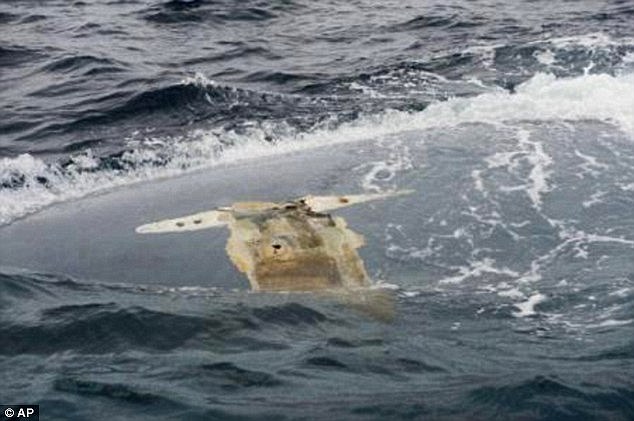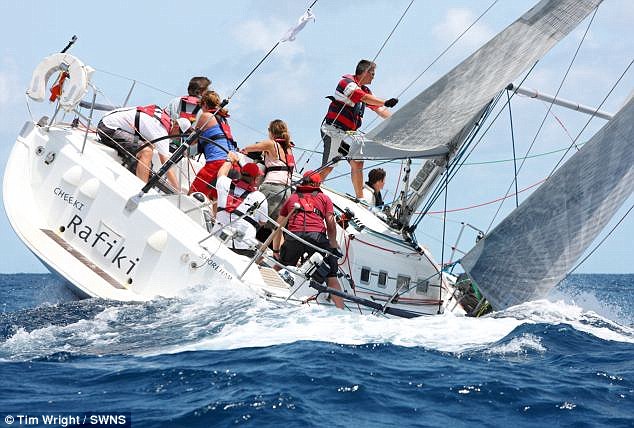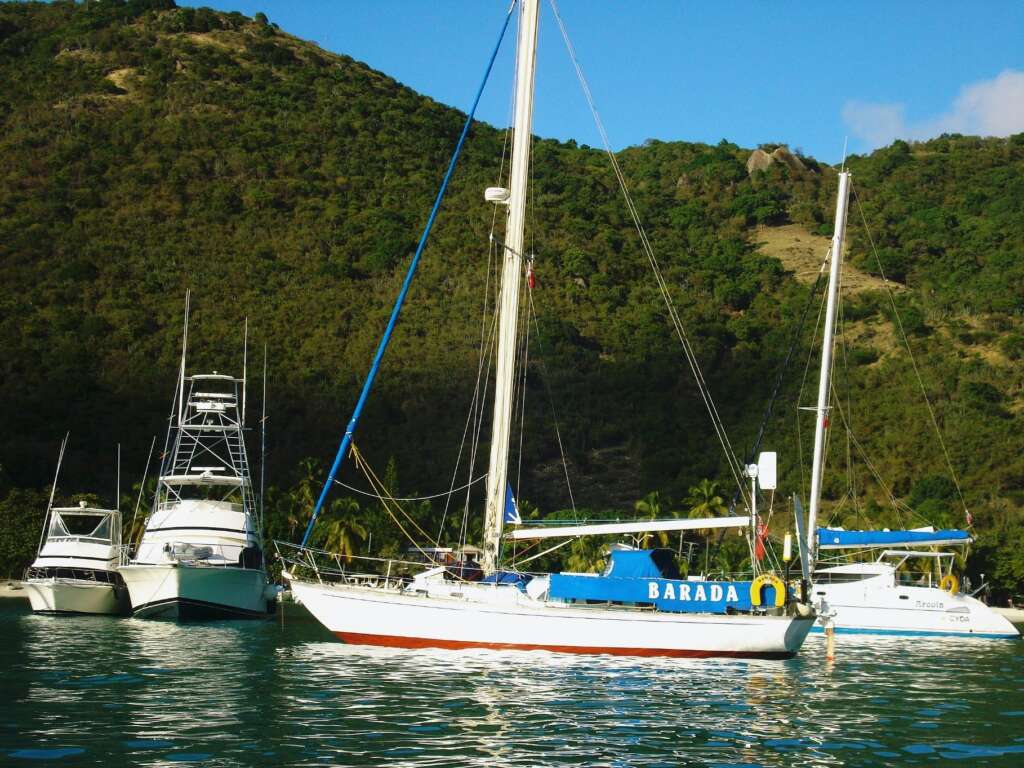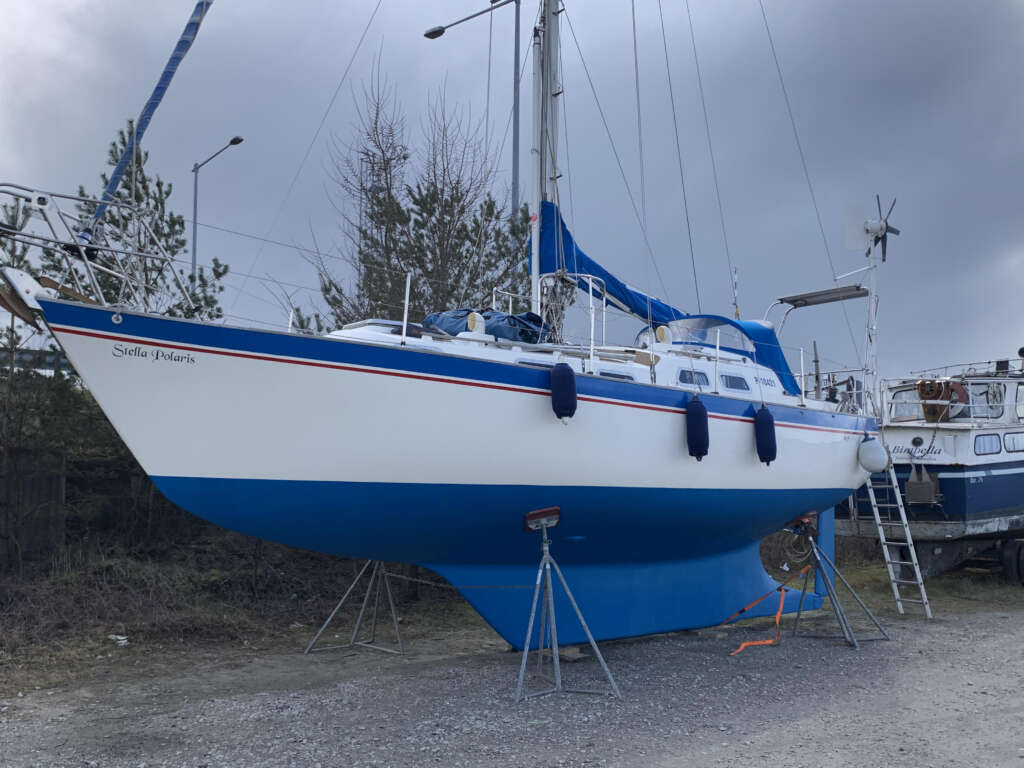Why I chose Stella Polaris for long distance sailing, especially solo.
On the morning of January 6 1997, a story was breaking about two yachts that had overturned in the Southern Ocean while competing in the Vendee Globe solo round-the-world race.
The Australian Maritime Rescue Coordination Centre had asked for urgent assistance from the Australian Defence Force after emergency beacons registered to the two yachts were detected.
HMAS Adelaide’s captain, Raydon Gates, was ordered to prepare his ship for a rescue mission with the Royal Australian Air Force.
Fierce winds had already wreaked havoc on Vendée Globe competitors. The Algimouss sunk on December 26, soon after its stricken lone sailor was hauled to safety by the skipper of a nearby race yacht.
An initial plan to rescue Dubois, who was safe inside a sealed life raft dropped by the RAAF, was abandoned on January 8 because of the weather conditions.
Plan B was launched in the early hours of January 9, when Gates sent the Seahawk helicopter to winch Dubois to safety and return to the ship just before sunrise.
The rescue went without a hitch and I still recall Dubois being very confident about the prospect of finding Bullimore alive later that day.
“He will be OK,” he told me as Adelaide charted its course to the Exide Challenger.
“He’s a tough guy. He will be in the boat.”
Seven’s cameraman Ross McLean and I chose a midships vantage point to set up and wait for the news story we had come to cover, be it good or bad.
Adelaide came to a halt about 200 metres from the Exide Challenger and from that point on the drama played out fast.
The ship’s crew, led by Chief Petty Officer Peter Wicker, arrived at the hull with equipment to cut through the fibreglass if necessary.
But after hearing voices calling out, Bullimore knew it was time to leave the air pocket he had managed to fasten himself into and duck dive for his life.
“When I dived out and looked over at the Adelaide I could only get a tremendous ecstasy, that I was looking at life, that I was saved,” was how Bullimore described his survival from on board the navy ship.
Bullimore also revealed how thoughts of dying ran through his mind in the hours leading up to his rescue. He was preparing his hidey-hole inside the Exide Challenger’s hull as though it would become his coffin.
“I really believed I was just on the brink and then I started asking myself questions like am I really preparing my grave?” he explained.
“I really did, I really did.”
News that Bullimore had been saved spread fast and media outlets around the world soon bombarded Adelaide’s satellite telephone hoping to speak with the recovering Englishman, Gates or anyone else aboard who could provide sound grabs for television and radio bulletins.
Overwhelmed by demand, the captain asked me if I would make myself available to newsrooms once I had satisfied my own network’s needs.
For hours, I fielded calls from international media services hungry for the tale of Bullimore’s miracle at sea.
What had happened in the severe weather conditions in the southern oceans Exide Challenger had lost her bolt on keel. As soon as the stainless steel keel bolts had sheared over she went, turning turtle. Tony put on his immersion suit as the boat was partially submerged he was able to hike himself up on the saloon shelf to keep out of the cold of the southern ocean waters. Through sheer will power and determination he kept himself alive until he was rescued by the Australian Navy.
I’m Cheeki Rafiki
This is getting worse’: Final message from British crew of Cheeki Rafiki yacht as they battled FIVE METRE waves in Atlantic – an hour before it capsized killing them all!
The final message from the captain of the doomed Cheeki Rafiki was ‘this is getting worse’ – an hour before the yacht capsized killing all four British sailors onboard, it has been revealed.
An official accident report has today suggested that hitting a big wave may have weakened the vessel’s hull and led to it taking on water.
The exhausted crew battled to stop their yacht sinking when water began flooding in but it capsized in stormy weather in the Atlantic ocean in May last year.
Lost: Four British sailors died when the Cheeki Rafiki yacht capsized in the Atlantic ocean in May 2014. They had been taking part in a regatta in Antigua and were sailing back to Southampton when the disaster happened.
Investigators have revealed that two days before the disaster the skipper of the Cheeki Rafiki, Andrew Bridge, 22, sent a message revealing that the yacht had ‘just hit a big wave hard’.
In his final message minutes before contact was lost the experienced seaman said: ‘This is getting worse’.
The report concludes that previous groundings and subsequent repairs to the Cheeki Rafiki may have caused the weakening at the point where the keel was attached to the hull.
It is believed the treacherous weather conditions – which led to the yacht being battered by five metre waves – also contributed to the vessel taking on water.



Capsized: The upturned hull of the British yacht was found 1,000 miles from Cape Cod. It was discovered that the life raft was undeployed aboard the flooded Cheeki Rafiki
Cheeki Rafiki was a Bénéteau First 40.7 sailing yacht. Her sinking on May 16, 2014 resulted in an extended debate over the safety of modern sailing boats. The yacht lost her keel about 720 nautical miles Southeast of Nova Scotia and subsequently capsized. Rescue services found her upturned hull before it sank but the crew – four English men – were never found.
One or more keel bolts on the yacht may have deteriorated and it was ‘probable that the crew were fatigued and their performance was impaired accordingly’, the Marine Accident Investigation Branch (MAIB) report also said.
But MAIB concluded: ‘In the absence of survivors and material evidence, the causes of the accident remain a matter of some speculation.’
The four men lost in the disaster were captain Andrew Bridge, 22, from Farnham, Surrey, and crew members James Male, 23, from Southampton, Steve Warren, 52, from Bridgwater, Somerset, and Paul Goslin, 56, from West Camel, Somerset.
Now these are both dramatic examples of two modern designed sailing boat both losing their bolt on keels in severe weather conditions.
It’s horses for courses meaning it depends upon your sailing plans? Where will you be sailing what time of year what are the average conditions you expect to encounter.
However if you’re like me and have an adventurous spirit maybe you’ll want to venture out across oceans?
My first sailing boat, which I only paid £15,000 for back in 2004, was wonderful sea kindly sailing boat a Camper & Nicholson 32. Classic pedigree of sail boat. Barada was a 1963 model 3 one of the early fibreglass boats by Camper & Nicholson. They were famous for their beautiful wooden regatta sailing boats. The hull was constructed at Halmatic in Porchester.
Business expanded as VT Halmatic was commissioned to mold large numbers of craft for Camper & Nicholson’s, Moody’s and other leading builders of that era. VT Halmatic introduced its own range of commercial and military craft which were supplied either as “part-assemblies” for other yards to complete or were fitted-out by VT Halmatic for its own customers. Among the many notable craft molded by VT Halmatic over the years are as follows:
The NICHOLSON 32 yacht designed by Camper and Nicholson and molded by Halmatic, followed by the NICHOLSON 26, 36, 38, 43, 48, 55 and 70. The MOODY 42, 52 and 62. The NELSON 40/42.

Modern yachts in most cases have bolt on keels, you can buy Rustler yacht made in Falmouth which has an encapsulated long keel but they’re more expensive to mould. Rustlers are beautiful yachts of the traditional classic lines but are a significant investment for most sailors.
The Nicholson’s 32 you can pick up relatively cheaply. But they don’t have great deal of room in the saloon area. But they are a go anywhere yacht. I have sailed across the Atlantic safely in a Nic 32 as they’re know. Being a long keel they sail beautifully. I had knock down years ago off North West Spain off Vigo. Big beam seas but she righted her self and on I went.
The other major factor with long keel boat is being able to hove to quite easily. If you’re over tired and you’re in strong winds and big seas. The long keel can be hove to quite easily.
A long encapsulated keel heaves to beautifully just about balancing the boat with the backed foresail and main sail but both should be well reefed.
Having an inner forestay is great as well because you can use hanked on storm jib. If things get really wild you pull down the main sail and put on your storm trisail. Both are heavy strong sails designed for high winds. You should be about 45% degrees off the wind. The boat keeps trying to sail to windward but the backed foresail keeps pushing the boat off.
You’re in equilibrium making about 1.5 knots forward. Boat lies quiet and comfortable. The storm sails are orange so ships can see you.
You go down below make something to eat rest and wait for the storm winds to pass through

Vancouver 32 Stella Polaris
Vancouver sail boats made by Northshore Yachts are very like Nicholson 32 long encapsulated keel. With similar sailing characteristic. These are cutter rigged meaning a roller furling forestay and an inner forestay for hanked on sails. Again giving more flexibility of sail choice and configuration. However they have smaller cockpit and large drain holes in case the boat is swamped at the stern.
They have a more spacious saloon area to a Nicholson 32. Stella Polaris is cica 1987 as compared to Barada cica 1964. But for all intents and purposes similar sail boats. The Vancouver 32 is much easier to handle going astern as compared to the Nicholson 32. Because they are tricky to handle going astern. Speak with any Nic 32 owner to that fact!
Vancouver 32 is made of fibre glass and has think layer fibre glass from the hull line to the bottom of the keel. There were only I think 68 or so made mine being hull 68!
People have sailed around the world in the Vancouver 28 smaller again still an encapsulated long keel.
Both the Nic 32 and Vancouver have excellent boat statistics. Details as follows;

Nicholson 32 Sail Boat Data
Hull Type: Long Keel
Rigging Type: Masthead Sloop
LOA: 32.00 ft / 9.75 m
LWL: 24.00 ft / 7.32 m
S.A. (reported):470.00 ft² / 43.66 m²
Beam: 9.25 ft / 2.82 m
Displacement: 12,200.00 lb / 5,534 kg
Ballast:6,800.00 lb / 3,084 kg
Max Draft: 5.50 ft / 1.68 m
Construction: FG
First Built: 1962
Last Built: 1981
# Built: 369
Builder: Camper & Nicholson/Halmatic Ltd. (UK)
Designer:
Charles A. Nicholson / Peter Nicholson
S.A. / Displ.: 14.24
Bal. / Displ.: 55.74
Disp: / Len: 393.98
Comfort Ratio: 36.89
Capsize Screening Formula: 1.61
S#: 1.01
Hull Speed: 6.56 kn
Pounds/Inch Immersion: 793.23 pounds/inch
The important element is the Capsize Screening Formula 1.61 which means has excellent self righting properties. With good comfort ratio of nearly 37.
Vancouver 32
Hull Type: Long Keel
Rigging Type: Cutter
LOA: 32.00 ft / 9.75 m
LWL: 27.50 ft / 8.38 m
S.A. (reported): 576.00 ft² / 53.51 m²
Beam: 10.58 ft / 3.22 m
Displacement: 14,000.00 lb / 6,350 kg
Ballast: 6,000.00 lb / 2,722 kg
Max Draft: 4.50 ft / 1.37 m
Construction: FG
First Built: 1986
Last Built:1991
# Built: 63
Builder: Ta Yang/Pheon Yachts Ltd.-Northshore Yachts Ltd.
Designer: Robert Harris
S.A. / Displ.: 15.92
Bal. / Displ.: 42.86
Disp: / Len: 300.53
Comfort Ratio: 32.40
Capsize Screening Formula: 1.76
S#:1.66
Hull Speed: 7.03 kn
Pounds/Inch Immersion: 1,039.60 pounds/inch
Capsize formula 1.76 and comfort ration 32.40 not quite as good as the Nicholson 32 but still excellent.
Let’s look at Beneteau 40.7 as a comparison:
Hull Type: Fin w/bulb & spade rudder
Rigging Type: Fractional Sloop
LOA: 39.25 ft / 11.96 m
LWL: 34.83 ft / 10.62 m
S.A. (reported): 806.00 ft² / 74.88m²
Beam: 12.33 ft / 3.76 m
Displacement:15,211.00 lb / 6,900 kg
Ballast:5,953.00 lb / 2,700 kg
Max Draft:7.75 ft / 2.36 m
Construction:FG
Ballast Type:Lead or Iron
First Built:1997
# Built:550
Builder:Beneteau (FRA)
Designer:Bruce Farr
S.A. / Displ.:21.08
Bal. / Displ.:39.14
Disp: / Len:160.71
Comfort Ratio:22.91
Capsize Screening Formula:1.99
S#:3.75
Hull Speed:7.91 kn
Pounds/Inch Immersion:1,534.49 pounds/inch
As you can see the capsize ratio formula is much higher at 1.99 below 2. and the comfort ration 22.91 much lower than the Nicholson 32 and Vancouver 32. Not forgetting modern sailboats all have bolt on keels. Which can sheer in high seas. I wouldn’t consider crossing oceans in sailing boat with a bolt-on keel. If you want to undertake serious ocean sailing choose a sail boat with an encapsulated keel.